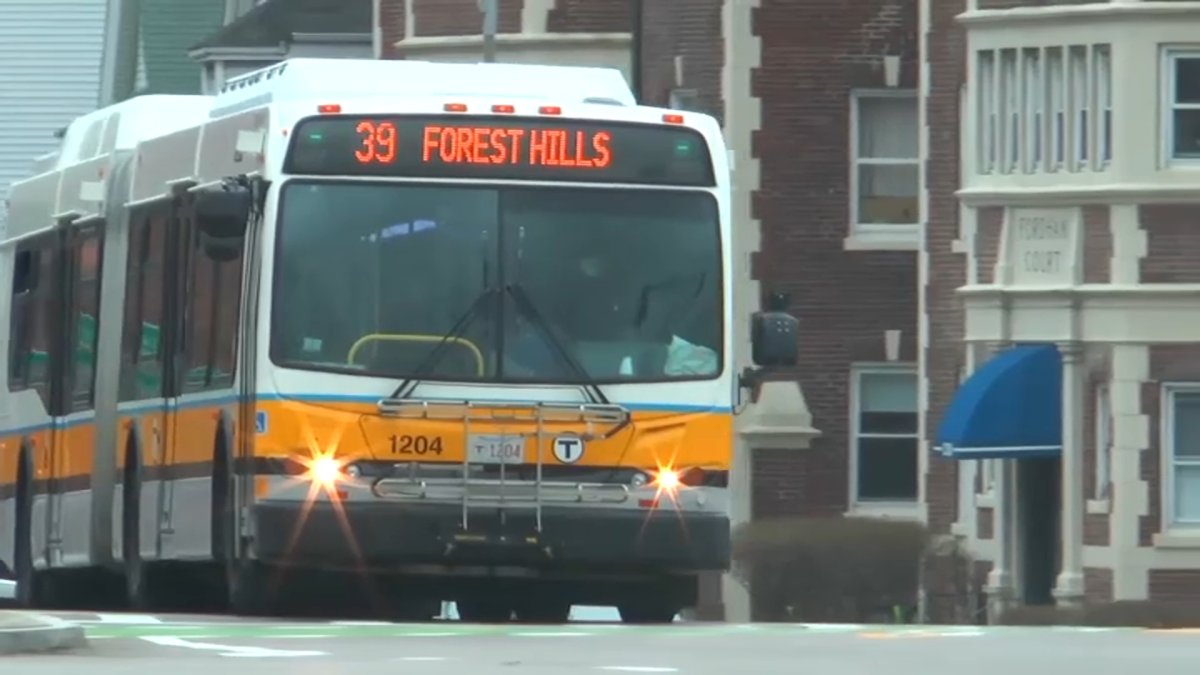My very preliminary reaction is a bit less negative on the restoration of some of those lower freq services. Comparing the maps side by side, the May version looks a bit more threadbare, while this version definitely offers more for the “low-freq one-seat” rider — folks who are willing to wait longer/plan around a low-freq schedule in order to avoid transfers. I’m also seeing good (maybe better, idk) coordination of trunk vs branching services — the May version seemed allergic to routes overlapping at all, but overlaps have their place and what I’m seeing in this version looks better on that front.
One challenge: apparently this redesign would require a 50% increase in bus drivers.

MBTA Needs Hiring Spree To Upgrade Bus Service
The MBTA will need to hire more than 750 new bus drivers to achieve an envisioned overhaul that would boost systemwide bus trip frequency by 25 percent, a daunting task amid a challenging labor market, officials said. Higher-ups at the transit agency have their sights set on transforming the...www.nbcboston.com
A couple of tweaks in the northern suburbs that I would make to the new bus proposals:
1) Add service to Market St in Lynnfield. The May proposal had relatively frequent service on the 426 bus, the October proposal has none. The lack of service there makes no sense, considering this is a job center.
2) Extend the 134 bus to Anderson/Woburn station, or to Wilmington Depot. The May proposal had a proposed 133 bus looping from the 134's current terminus via southern Wilmington to Anderson/Woburn. The October proposal keeps the 134 at its current terminus just north of the Woburn/Wilmington line. Connecting it to a station at the end will serve more passengers and allow for better connections. Extending it to Wilmington Depot will allow for Lowell Line and LRTA bus connections. Extending it to Anderson will allow for access to plenty of parking, Lowell Line, Amtrak Downeaster, and Logan Express connections.
3) Either extend the proposed 132 bus from its terminus in Woburn Center to the 354/80/LRTA terminus at Chestnut Ave in Burlington via Winn St or via Lexington St to Cambridge St., or instead extend it via Lexington/Cambridge Streets to the the Burlington Mall/Second Ave area and eliminate the loop through the Mall/Second Ave area on the proposed 80 (North Burlington-Davis Sq) and terminate it near Second Ave.
If the mall/Second Ave loop is eliminated on the 80 in favor of extending the 132 to Second Ave from Woburn it will give passengers traveling to/from points in Burlington north of the mall to/from Davis on the 80 a much quicker ride in (the mall loop as it currently is is an exercise in tedium for those going to/from points north, never mind the added Second Ave deviation), and it will make it easier for workers who live in the Malden/Everett/Revere area a quicker commute to the mall area, and will allow for the two LRTA lines that serve that area to have connections to two separate MBTA lines, instead of two LRTA routes connecting to one MBTA route.
Alternatively, extending the proposed 132 to Chestnut Ave in Burlington in favor of keeping the mall/Second Ave deviation on the 80 will also eliminate the tedious Mall/Second Ave detour for many passengers going to/from points north of the mall while introducing a direct connection to the Malden/Melrose area and the Orange Line, will introduce service to Winnmere -the most densely populated neighborhood in Burlington- and will allow passengers who want to travel to/from the mall area to connect via the 80 at any point north of the Winn St/Cambridge St intersection in Burlington Center. Routing the 132 via Lexington/Cambridge Streets instead of Winn would allow for better connections to the Mall area via the 80 between, but will bypass Winnmere.
Last edited:
